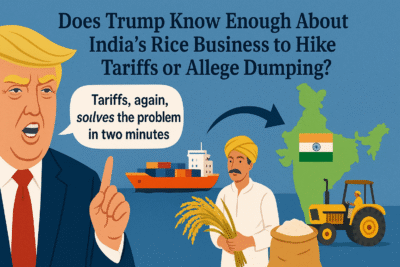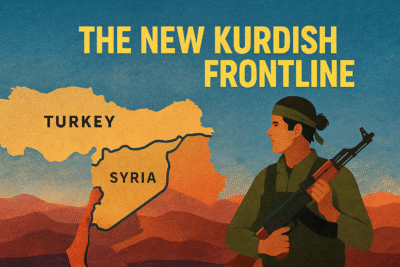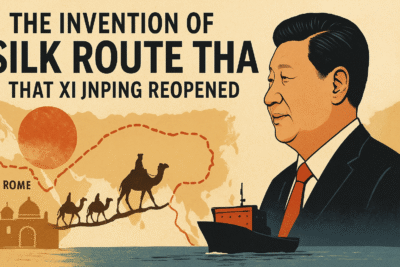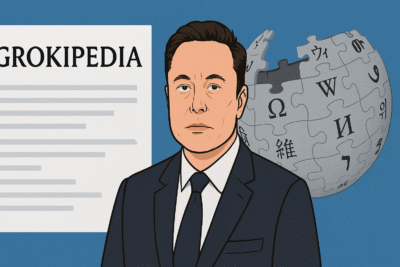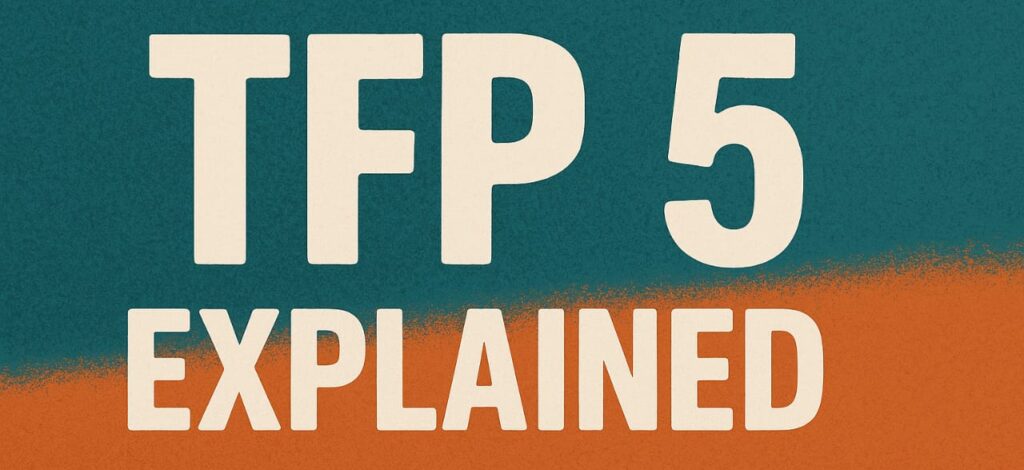
TFP 5 Explained
1.
Indians abducted in Mali: What happened, who is responsible, and what comes next?
How did the abduction take place?
- On 1 July 2025, three Indian nationals working at the Diamond Cement Factory in Kayes, Mali, were abducted by armed militants.
- The factory, located in a region already troubled by insecurity, became the target of Jama’at Nusrat al-Islam wal-Muslimin (JNIM), a group affiliated with al-Qaeda.
- The attack was part of a broader surge in violence across western and central Mali, where both local and foreign workers have increasingly become targets.
Who are the victims and what is their background?
- Among the abducted is P Venkataraman, a 28-year-old from Odisha, India. The identities of the other two Indian nationals have also been confirmed by the Indian Embassy.
- All three were employed by the cement factory, which is a significant employer of expatriates in the region.
- Their families in India have expressed deep distress, having lost all contact since the abduction.
What is the response from Indian authorities?
- The Indian Ministry of External Affairs (MEA) has strongly condemned the abduction, calling it a “deplorable act of violence.”
- The Indian Embassy in Bamako is in close contact with Malian authorities and the management of the cement company.
- Efforts are being coordinated with local law enforcement and international partners to secure the safe release of the hostages.
- The MEA has also issued advisories to Indian nationals in Mali, urging them to exercise extreme caution.
Why is this incident significant for India and the region?
- This abduction highlights the risks faced by Indian and other foreign workers in volatile regions like West Africa.
- It also places a spotlight on India’s responsibility to protect its citizens abroad and the challenges of operating in conflict zones.
- For Mali, the incident underscores the persistent threat of terrorism and the difficulty of ensuring security for foreign investments and workers.
What are the possible outcomes and next steps?
- Diplomatic and security efforts are ongoing, but the situation remains tense. Past incidents in the region have sometimes ended with negotiated releases, but outcomes can be unpredictable.
- The families of the abducted await updates, while the broader Indian community in West Africa is on alert.
- The case may also prompt a review of India’s policies regarding the deployment of its nationals in high-risk areas.
2.
Bilawal Bhutto’s extradition offer: Is it a diplomatic breakthrough or political posturing?
What did Bilawal Bhutto actually propose?
- Bilawal Bhutto Zardari, former Foreign Minister of Pakistan, has said that Pakistan is open to extraditing high-profile terror suspects, including Hafiz Saeed and Masood Azhar, to India.
- He framed this as a gesture of goodwill, conditional on India’s cooperation in providing evidence and witnesses to support legal proceedings in Pakistani courts.
How have Indian authorities and the public responded?
- The offer has been met with scepticism in India. Many officials and analysts view it as lacking substance, especially given the history of stalled cooperation and legal hurdles between the two countries.
- Critics argue that such statements are often made for international audiences or domestic political gain, rather than as genuine policy shifts.
What Is the political context in Pakistan?
- Within Pakistan, Bhutto’s remarks have stirred controversy. Opposition parties have accused him of making empty promises that he is not in a position to fulfil.
- Some see the statement as an attempt to appear conciliatory to the international community, while others believe it is aimed at shifting the domestic political narrative.
What are the legal and diplomatic challenges?
- Extradition between India and Pakistan is fraught with legal complexities, including issues of admissible evidence, lack of mutual trust, and the absence of a comprehensive extradition treaty.
- Even if both governments were to agree in principle, the legal process could take years and face numerous obstacles.
What could this mean for India-Pakistan relations?
- While Bhutto’s statement has reignited debate about counter-terrorism cooperation, it is unlikely to lead to immediate breakthroughs.
- However, it does highlight the ongoing importance of dialogue and the need for confidence-building measures.
- Whether this offer will lead to concrete action or remain a diplomatic soundbite will depend on developments in both countries’ political landscapes.
3.
Ship attacked in Red Sea: What happened, who is behind it, and why does it matter?
What exactly happened to the vessel?
- A commercial ship navigating the Red Sea off the coast of Yemen was attacked by armed men using guns and rocket-propelled grenades.
- The assailants boarded the vessel, fired upon the crew, and attempted to cause significant damage before fleeing.
- The ship’s crew managed to send a distress signal, prompting a rapid response from nearby naval forces.
Who is believed to be responsible?
- While investigations are ongoing, initial reports suggest the attack may be linked to armed groups operating out of Yemen, including Houthi rebels or pirates who have exploited the country’s instability.
- Such attacks have become increasingly common in the waters off West Asia, where the ongoing conflict in Yemen has created a security vacuum.
How does this affect global shipping and trade?
- The Red Sea is a critical maritime route, connecting the Suez Canal to the Indian Ocean and facilitating a significant portion of global trade.
- Attacks like this disrupt shipping schedules, increase insurance costs, and pose serious risks to the safety of seafarers.
- They also raise the spectre of environmental disasters if vessels carrying hazardous materials are targeted.
What is the Ilinternational response?
- Naval forces from multiple countries, including those participating in international anti-piracy operations, have stepped up patrols and issued advisories to vessels transiting the area.
- The attack has prompted renewed calls for coordinated international action to secure maritime routes and address the underlying instability in Yemen and West Asia.
What are the broader implications?
- This incident underscores the ongoing threat to maritime security in West Asia and the challenges of protecting vital trade routes in conflict zones.
- It also highlights the need for diplomatic efforts to resolve the Yemen conflict and restore stability to the region.
4.
Elon Musk’s ‘America Party’: What is it, why now, and could ot change US politics?
What is the America Party and who is behind It?
- Elon Musk, the high-profile entrepreneur behind Tesla and SpaceX, has launched the “America Party,” positioning it as a centrist alternative to the traditional Democratic and Republican parties.
- The party has already attracted support from notable figures such as Mark Cuban and Anthony Scaramucci, signalling its intention to be a serious political force.
Why did Musk decide to launch a new party?
- Musk has cited widespread public dissatisfaction with the two-party system, political gridlock, and a lack of innovative solutions to national problems as key motivations.
- The America Party aims to offer pragmatic, non-partisan governance focused on technology, economic competitiveness, and social cohesion.
What are the party’s main priorities and platform?
- While detailed policy proposals are still being developed, the party is expected to champion issues such as technological advancement, education reform, and economic growth.
- It also seeks to appeal to voters who feel alienated by the polarisation of American politics.
What challenges does the party face?
- Third parties in the United States have historically struggled due to structural barriers such as the winner-takes-all electoral system, ballot access laws, and limited media coverage.
- However, Musk’s celebrity status and financial resources could help the America Party overcome some of these obstacles.
Could the America Party actually change US politics?
- The party’s success will depend on its ability to build a broad coalition and win support in key states.
- If it can attract enough voters, it could force the major parties to address issues they have neglected and potentially reshape the political landscape.
- Even if it does not win major elections, the America Party could influence national debates and policy priorities.
5.
Meta’s AI breakthrough: How does it decode brain activity, and what could it mean for the future?
What is the new technology and how does it work?
- Meta, in collaboration with the Basque Center for Cognition, Brain, and Language, has developed an artificial intelligence system called Brain2Qwerty. This seems similar to ‘chips in brain’ that left the world in awe some time back. That came from Musk’s repertoire.
- This system uses non-invasive techniques—magnetoencephalography (MEG) and electroencephalography (EEG) — to decode brain activity and convert it into text with up to 80% accuracy.
- Volunteers had their brain signals recorded while typing sentences, and the AI was trained to reconstruct the sentences from these neural patterns.
Why Is This Breakthrough Important?
- This technology could revolutionise communication for people with speech impairments or paralysis, offering a way to translate thoughts directly into written words without the need for invasive brain implants.
- It also provides new insights into how the brain processes language, potentially advancing both neuroscience and artificial intelligence research.
What are the current limitations and challenges?
- Despite its promise, the technology is not yet ready for everyday use. MEG equipment is expensive, bulky, and requires controlled environments, limiting its accessibility.
- The system has so far only been tested on healthy volunteers, and its effectiveness for patients with neurological conditions remains unproven.
What are the future prospects and ethical considerations?
- As the technology matures, it could lead to new assistive devices for people with disabilities, transforming how they interact with the world.
- However, it also raises ethical questions about privacy, consent, and the potential misuse of brain data.
- Policymakers and researchers will need to address these concerns as the technology develops.
How does this fit into the broader landscape of brain-computer interfaces?
- Brain2Qwerty is part of a growing field of brain-computer interface research, which aims to bridge the gap between human thought and digital communication.
- While invasive devices have shown promise, non-invasive solutions like Meta’s are seen as more practical for widespread adoption.
- This breakthrough could accelerate progress towards seamless, thought-driven interaction with technology.
